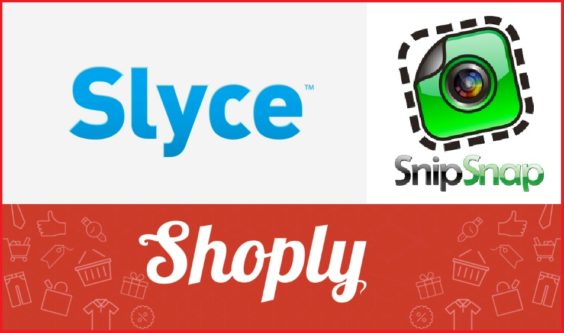
The idea seemed preposterous to anyone who knew anything about coupons – just take a picture of any offer, and redeem it as though it was the actual coupon! Kind of like taking a picture of a $20 bill and showing it to a cashier instead of paying. But now the company behind this idea is having the last laugh – and inspiring others to join in all the fun.
Canadian technology company Slyce has announced its $6.5 million purchase of the SnipSnap coupon app, providing both a nice payday and some vindication for the controversial app’s founders.
While it was praised by tech writers and investors upon its debut in 2012, SnipSnap initially struck many in the coupon industry as a spectacularly bad idea. It’s “the digital equivalent of making photocopies of coupons,” “a fraudulent operation,” “a business model that depends on (copyright) infringement,” are some of the kinder things that critics had to say. They objected to SnipSnap’s premise that you could simply snap a photo of a coupon, and the app would magically transform it into a digital coupon that could be redeemed in stores, shared with others, and used over and over again.
It took a while to work out the kinks. But after improving the app’s ability to weed out manufacturer’s coupons, complying with several retailers’ demands that their coupons be removed, and defending itself against a lawsuit, SnipSnap kind of went legit. Today it has 4 million users, and the company is turning a profit, thanks to partnerships with dozens of retailers who pay the company a commission for making their offers available on the app.
It may seem like a rocky way to start a business – fiddling with the engine and changing the tires, while the car is barreling down the highway – but $6.5 million says it just might have been worth it.
SnipSnap’s new owner, Slyce, is in the image recognition business. It builds software that allows you to take a picture of a product, and search for it in stores or buy it online. The SnipSnap acquisition will allow the company to create “an all-in-one mobile shopping solution, incorporating 3D visual search, instant couponing and one-click customer checkout,” the company proclaims.
Back in 2013, when asked whether the controversy surrounding SnipSnap gave it pause about entering a business relationship with the company, Valpak abruptly called off its new partnership just a few days later. This week, when asked the same question, Slyce didn’t offer a response.
That’s okay, SnipSnap doesn’t return calls or emails from Coupons in the News anymore, either.
But now that taking photos of your coupons is apparently considered an okay thing to do, others are getting into the game. Just last week came the official launch of Shoply, an app that “aims to cut the clutter of paper and plastic by digitizing coupons, promotions, loyalty and gift cards in an intelligent, all-in-one shopping assistant.”
Well, that sounds familiar.
But Shoply appears to have learned from some of its predecessor’s early mistakes. Shoply formed partnerships with retailers before launching, and it only allows users to upload (and not share) coupons from verified retailers who have agreed to accept coupons via the app. That’s in contrast to SnipSnap, which upon its launch allowed users to scan and share coupons from any retailer, and only whittled down the list after a number of retailers and coupon issuers objected to being a part of it.
“We are familiar with SnipSnap and have researched them as a part of our competition analysis,” Shoply spokesperson Alicia Ritchey told Coupons in the News. “This helped us avoid many pitfalls early on in our product development. This is why we do not allow the sharing of personal coupons, and why we work with a third party that has relationships with retailers/brands. We also have a team of content curators to ensure that the deals published to our users are valid.”
Both apps are meant to work only with retailer-issued coupons. Despite all of the potential problems associated with taking photos of grocery coupons, SnipSnap still says that manufacturer’s coupons are not supported “yet”. And curiously, Shoply says the same. But while SnipSnap has applied for a patent explaining how it hopes to be able to digitize manufacturer’s coupons, Shoply says that’s not really a priority at the moment. “We may explore the possibility of incorporating grocery coupons in the distant future,” Ritchey said, “but at this time, we are more focused on providing the best retail deals and growing our user base.”
Shoply’s selling point is that it doesn’t rely on “automatic aggregation of coupons.” Instead, it employs a “team of deal hunters (who) hand-curate the best fashion, home and lifestyle offers from more than 200 of the nation’s top retailers.” Shoply is “more informative, easier to use, and has more to offer than any other shopping apps,” CEO Pala Kuppusamy said in a statement.
So redeeming a photo of a coupon – what was once unthinkable, and still a little unseemly to some – is now practically commonplace, with more competitors entering the fray, jockeying to become the next big thing. And why not? If you can push aside the critics, placate the objectors and settle the lawsuits, SnipSnap has just shown that there are 6.5 million good reasons to give it a try.










